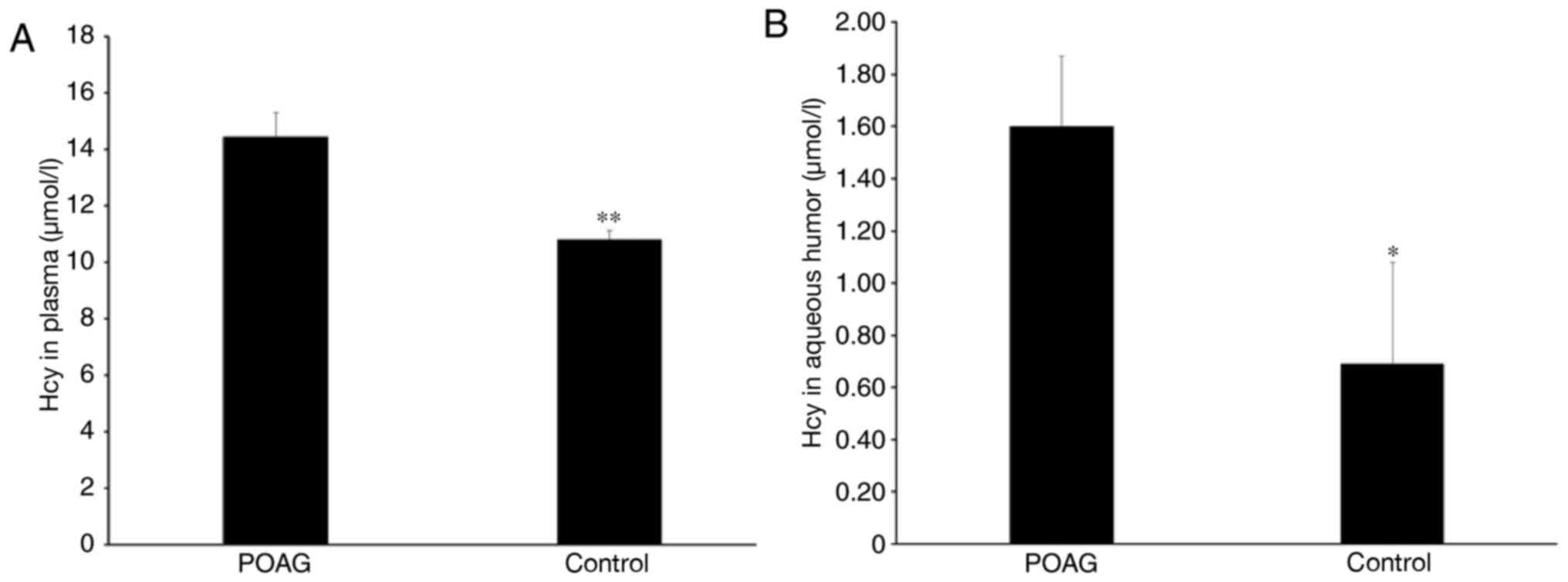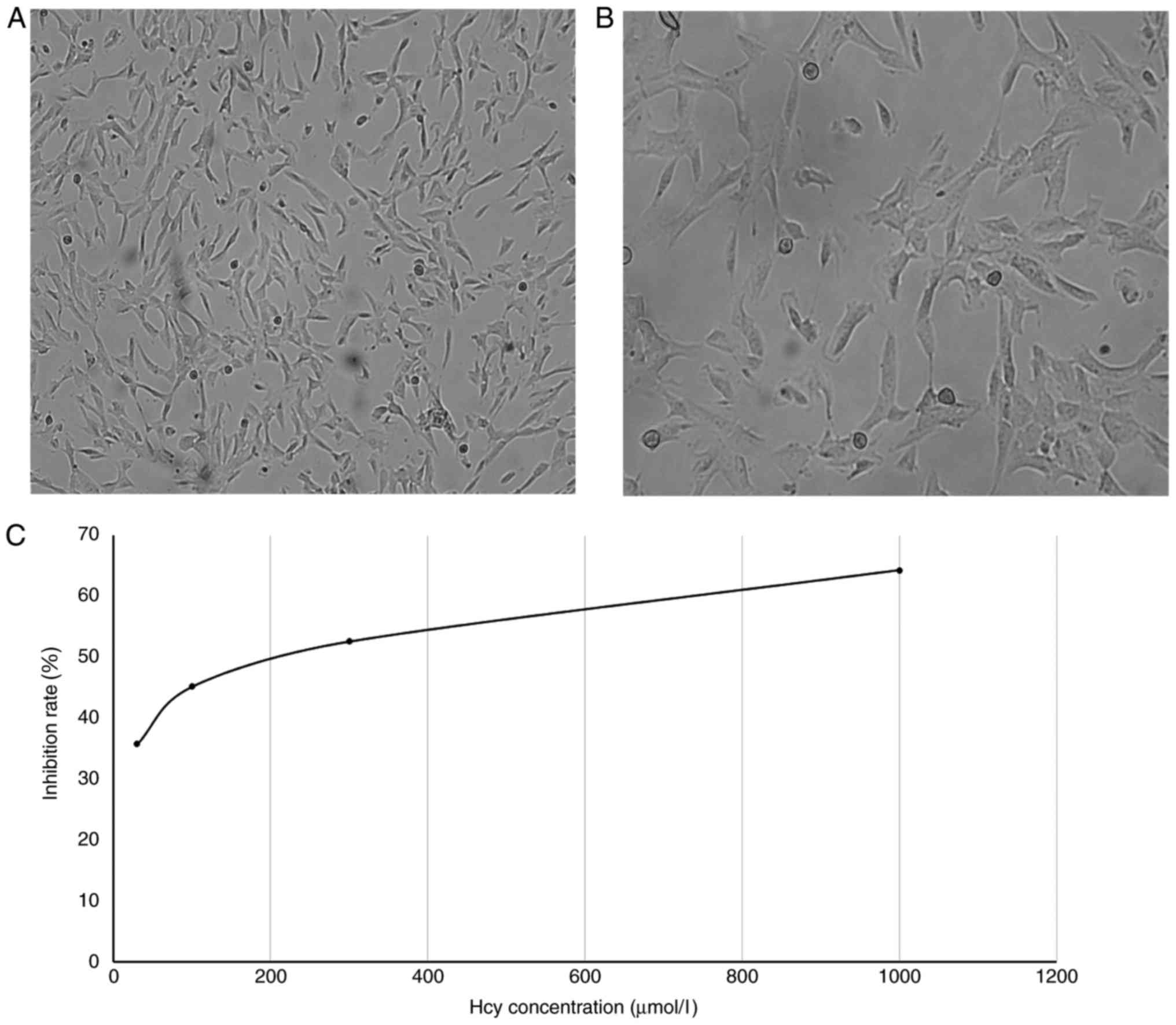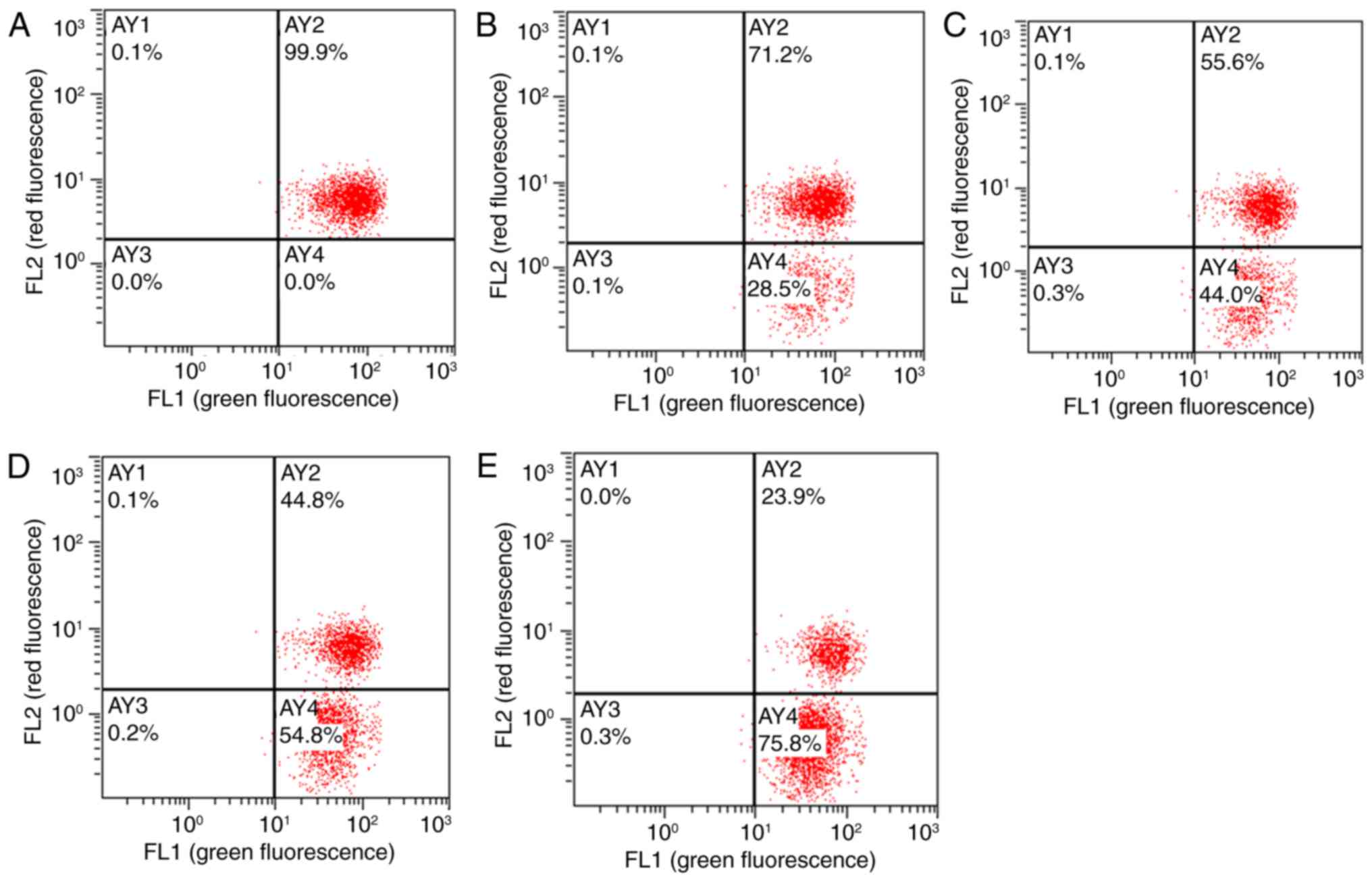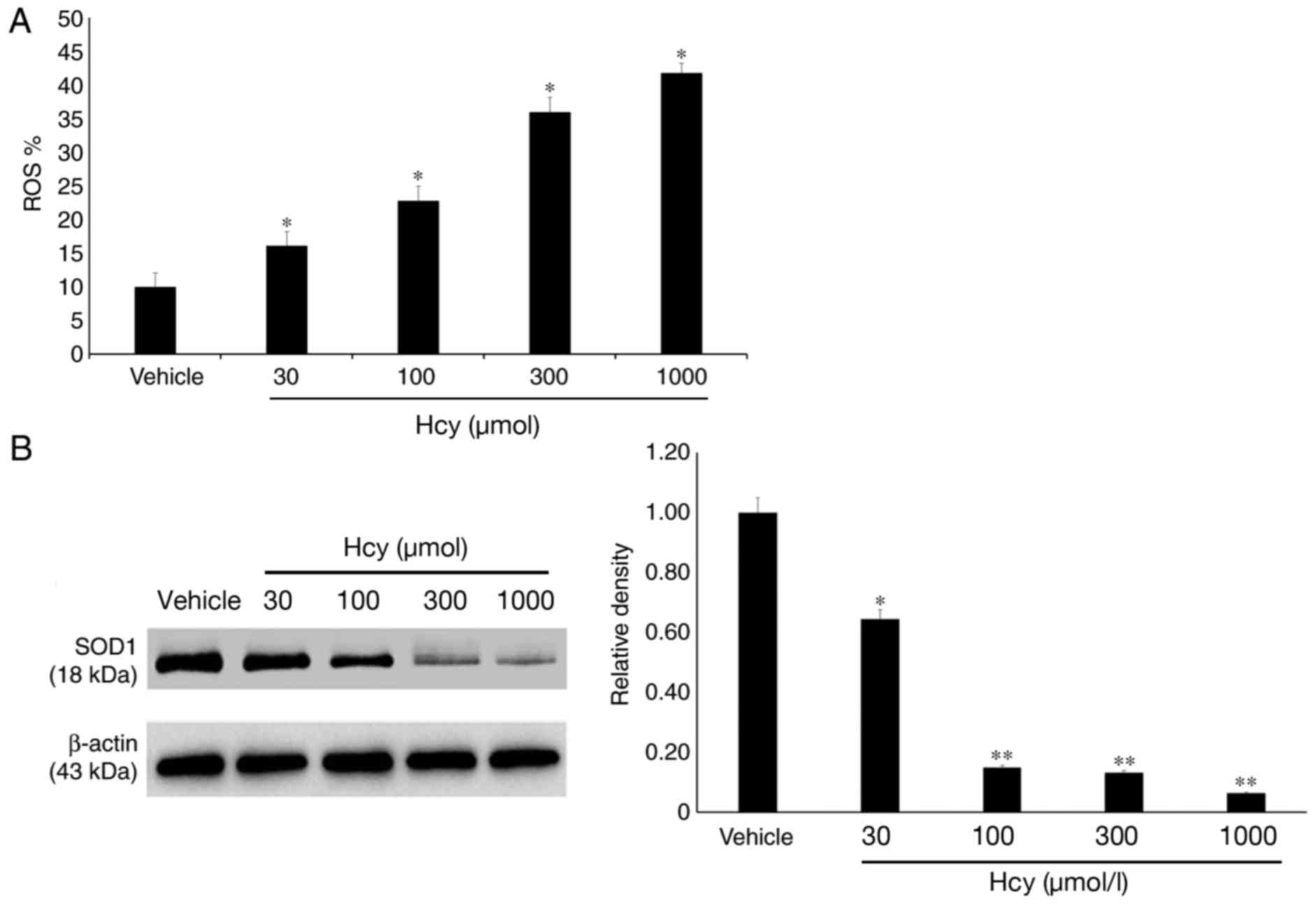|
1
|
Quigley HA and Broman AT: The number of
people with glaucoma worldwide in 2010 and 2020. Br J Ophthalmol.
90:262–267. 2006. View Article : Google Scholar : PubMed/NCBI
|
|
2
|
Kanski J and Bowling B: Clinical
Ophthalmology: A systematic approach. 7th edition. Elsevier;
London: pp. 3311–3331. 2011
|
|
3
|
Xin C, Tian N, Li M, Wang H and Wang N:
Mechanism of the reconstruction of aqueous outflow drainage. Sci
China Life Sci. Dec 22–2017.(Epub Ahead of Print). View Article : Google Scholar
|
|
4
|
Saccà SC, Gandolfi S, Bagnis A, Manni G,
Damonte G, Traverso CE and Izzotti A: The outflow pathway: A tissue
with morphological and functional unity. J Cell Physiol.
231:1876–1893. 2016. View Article : Google Scholar : PubMed/NCBI
|
|
5
|
Chrysostomou V, Rezania F, Trounce IA and
Crowston JG: Oxidative stress and mitochondrial dysfunction in
glaucoma. Curr Opin Pharmacol. 13:12–15. 2013. View Article : Google Scholar : PubMed/NCBI
|
|
6
|
Zhao J, Wang S, Zhong W, Yang B, Sun L and
Zheng Y: Oxidative stress in the trabecular meshwork (Review). Int
J Mol Med. 38:995–1002. 2016. View Article : Google Scholar : PubMed/NCBI
|
|
7
|
Ghanem AA, Arafa LF and El-Baz A:
Oxidative stress markers in patients with primary open-angle
glaucoma. Curr Eye Res. 35:295–301. 2010. View Article : Google Scholar : PubMed/NCBI
|
|
8
|
Long Y and Nie J: Homocysteine in Renal
Injury. Kidney Dis (Basel). 2:80–87. 2016. View Article : Google Scholar : PubMed/NCBI
|
|
9
|
Sanz J, Moreno PR and Fuster V: The year
in atherothrombosis. J Am Coll Cardiol. 62:1131–1143. 2013.
View Article : Google Scholar : PubMed/NCBI
|
|
10
|
Bleich S, Jünemann A, von Ahsen N, Lausen
B, Ritter K, Beck G, Naumann GO and Kornhuber J: Homocysteine and
risk of open-angle glaucoma. J Neural Transm (Vienna).
109:1499–1504. 2002. View Article : Google Scholar : PubMed/NCBI
|
|
11
|
Xu F, Zhao X, Zeng SM, Li L, Zhong HB and
Li M: Homocysteine, B vitamins, methylenetetrahydrofolate reductase
gene, and risk of primary open-angle glaucoma: A meta-analysis.
Ophthalmology. 119:2493–2499. 2012. View Article : Google Scholar : PubMed/NCBI
|
|
12
|
Goyal A, Srivastava A, Sihota R and Kaur
J: Evaluation of oxidative stress markers in aqueous humor of
primary open angle glaucoma and primary angle closure glaucoma
patients. Curr Eye Res. 39:823–829. 2014. View Article : Google Scholar : PubMed/NCBI
|
|
13
|
Perelman A, Wachtel C, Cohen M, Haupt S,
Shapiro H and Tzur A: JC-1: Alternative excitation wavelengths
facilitate mitochondrial membrane potential cytometry. Cell Death
Dis. 3:e4302012. View Article : Google Scholar : PubMed/NCBI
|
|
14
|
Kruk J, Kubasik-Kladna K and Aboul-Enein
HY: The role oxidative stress in the pathogenesis of eye diseases:
Current status and a dual role of physical activity. Mini Rev Med
Chem. 16:241–257. 2015. View Article : Google Scholar : PubMed/NCBI
|
|
15
|
Babizhayev MA: Biomarkers and special
features of oxidative stress in the anterior segment of the eye
linked to lens cataract and the trabecular meshwork injury in
primary open-angle glaucoma: Challenges of dual combination therapy
with N-acetylcarnosine lubricant eye drops and oral formulation of
nonhydrolyzed carnosine. Fundam Clin Pharmacol. 26:86–117. 2012.
View Article : Google Scholar : PubMed/NCBI
|
|
16
|
Ergan E, Ozturk F, Beyazyildiz E, Elgin U,
Sen E, Cankaya AB and Celik T: Oxidant/antioxidant balance in the
aqueous humor of patients with glaucoma. Int J Ophthalmol.
9:249–252. 2016.PubMed/NCBI
|
|
17
|
Ghanem AA, Mady SM, El awady HE and Arafa
LF: Homocysteine and hydroxyproline levels in patients with primary
open-angle glaucoma. Curr Eye Res. 37:712–718. 2012. View Article : Google Scholar : PubMed/NCBI
|
|
18
|
Leibovitzh H, Cohen E, Levi A, Kramer M,
Shochat T, Goldberg E and Krause I: Relationship between
homocysteine and intraocular pressure in men and women: A
population-based study. Medicine (Baltimore). 95:e48582016.
View Article : Google Scholar : PubMed/NCBI
|
|
19
|
Zacharaki F, Hadjigeorgiou GM, Koliakos
GG, Morrison MA, Tsezou A, Chatzoulis DZ, Almpanidou P, Topouridou
K, Karabatsas CH, Pefkianaki M, et al: Plasma homocysteine and
genetic variants of homocysteine metabolism enzymes in patients
from central Greece with primary open-angle glaucoma and
pseudoexfoliation glaucoma. Clin Ophthalmol. 8:1819–1825. 2014.
View Article : Google Scholar : PubMed/NCBI
|
|
20
|
Kim E and Varma R: Glaucoma in
latinos/hispanics. Curr Opin Ophthalmol. 21:100–105. 2010.
View Article : Google Scholar : PubMed/NCBI
|
|
21
|
Racette L, Wilson MR, Zangwill LM, Weinreb
RN and Sample PA: Primary open-angle glaucoma in blacks: A review.
Surv Ophthalmol. 48:295–313. 2003. View Article : Google Scholar : PubMed/NCBI
|
|
22
|
Wells JL and Dumbrell AC: Nutrition and
aging: Assessment and treatment of compromised nutritional status
in frail elderly patients. Clin Interv Aging. 1:67–79. 2006.
View Article : Google Scholar : PubMed/NCBI
|
|
23
|
Perła-Kaján J, Twardowski T and Jakubowski
H: Mechanisms of homocysteine toxicity in humans. Amino Acids.
32:561–572. 2007. View Article : Google Scholar : PubMed/NCBI
|
|
24
|
Caballero M, Liton PB, Epstein DL and
Gonzalez P: Proteasome inhibition by chronic oxidative stress in
human trabecular meshwork cells. Biochem Biophys Res Commun.
308:346–352. 2003. View Article : Google Scholar : PubMed/NCBI
|
|
25
|
He Y, Ge J and Tombran-Tink J:
Mitochondrial defects and dysfunction in calcium regulation in
glaucomatous trabecular meshwork cells. Invest Ophthalmol Vis Sci.
49:4912–4922. 2008. View Article : Google Scholar : PubMed/NCBI
|
|
26
|
Sung DK, Chang YS, Kang S, Song HY, Park
WS and Lee BH: Comparative evaluation of hypoxic-ischemic brain
injury by flow cytometric analysis of mitochondrial membrane
potential with JC-1 in neonatal rats. J Neurosci Methods.
193:232–238. 2010. View Article : Google Scholar : PubMed/NCBI
|
|
27
|
Izzotti A, Longobardi M, Cartiglia C and
Saccà SC: Mitochondrial damage in the trabecular meshwork occurs
only in primary open-angle glaucoma and in pseudoexfoliative
glaucoma. PLoS One. 6:e145672011. View Article : Google Scholar : PubMed/NCBI
|
|
28
|
Koh JM, Lee YS, Kim YS, Kim DJ, Kim HH,
Park JY, Lee KU and Kim GS: Homocysteine enhances bone resorption
by stimulation of osteoclast formation and activity through
increased intracellular ROS generation. J Bone Miner Res.
21:1003–1011. 2006. View Article : Google Scholar : PubMed/NCBI
|
|
29
|
Kang SW, Chang TS, Lee TH, Kim ES, Yu DY
and Rhee SG: Cytosolic peroxiredoxin attenuates the activation of
Jnk and p38 but potentiates that of Erk in Hela cells stimulated
with tumor necrosis factor-alpha. J Biol Chem. 279:2535–2543. 2004.
View Article : Google Scholar : PubMed/NCBI
|


















